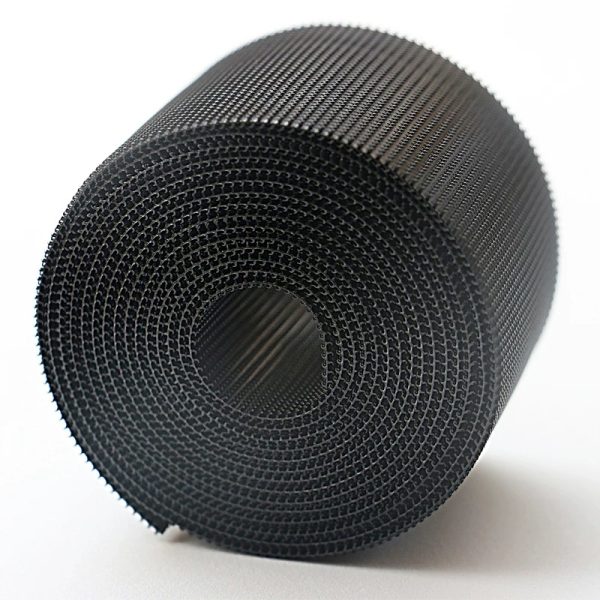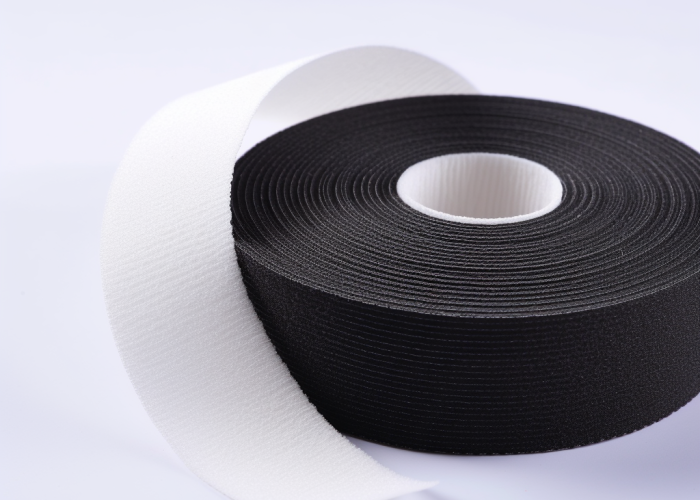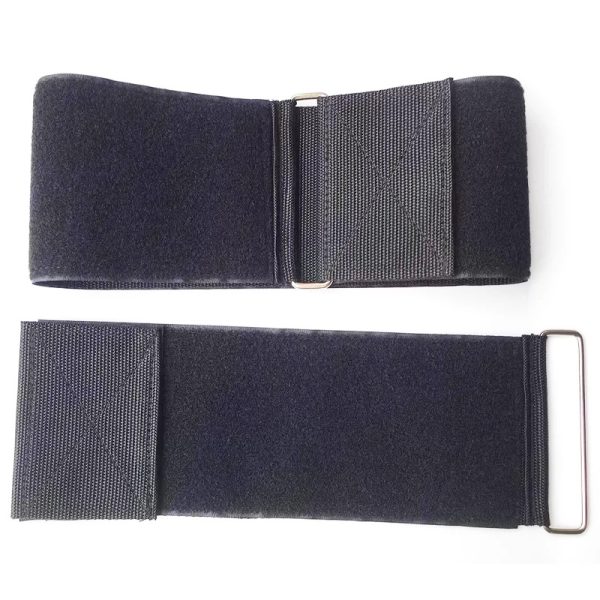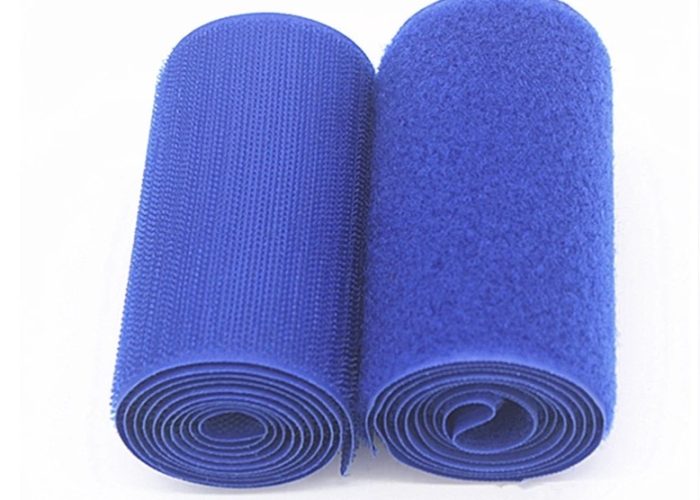Selecting appropriate Velcro straps for medical devices requires understanding industry standards and dimensional specifications. While certain conventions exist in healthcare settings, our custom manufacturing capabilities can address the unique requirements of medical device manufacturers seeking optimal performance, patient comfort, and regulatory compliance.
Yes, there are common standard dimensions for Velcro straps in medical devices, but no universal, mandated standards for specific Velcro strap lengths. Medical Velcro straps typically come in standard widths ranging from 0.5 inch (12 mm) up to 4 inches (100 mm), with lengths varying widely based on application needs. The industry offers a wide variety of standard sizes while allowing customization to meet specific clinical requirements.
Explore standard dimensions for medical Velcro straps, compare common sizes by application, and learn how custom manufacturing ensures optimal function and regulatory compliance.


Webbing manufacturing expert with 15+ years of experience helping product developers build high-performance straps for industrial, medical, and outdoor use.
Medical Velcro straps come in standard dimensions that typically range from 0.5″ to 4″ in width, with lengths customizable based on application needs. While not universally mandated, these industry-standard dimensions have evolved to meet common clinical requirements across various medical devices, balancing functionality, regulatory compliance, and manufacturing efficiency.
Key dimensions and applications at a glance:
Medical Velcro strap widths correlate directly with specific healthcare applications. Narrower straps (0.5″-0.75″) provide precision attachment for sensitive equipment and pediatric devices where minimal contact area is required. The 1″ width represents the most versatile dimension, commonly used for general patient restraints and medical device securing across multiple settings.
For applications requiring increased strength and stability, the 1.5″-2″ range provides optimal surface area for load distribution. These dimensions are standard for patient positioning in surgical settings, heavy-duty restraints, and applications where preventing movement is critical. The wider 3″-4″ straps are specialty dimensions, typically reserved for large equipment immobilization or specialized clinical scenarios.
Length requirements vary significantly based on application and are less standardized than width dimensions. Most manufacturers provide Velcro straps in rolls (typically 25-30 feet) that can be cut to the desired length at the point of use. For specialized applications, pre-cut lengths ranging from 6″ to 24″ are commonly available, with custom lengths produced to exact specifications for critical applications.
Our manufacturing capabilities allow for precise dimensional control across all standard sizes, with custom width and length combinations available for specialized medical applications with minimum order quantities as low as 500 units for non-standard dimensions.

The optimal Velcro strap width for medical applications depends primarily on the required holding strength, device weight, and patient contact considerations. Selecting the appropriate width directly impacts functionality, patient comfort, and the overall performance of your medical device.
Width selection guide at a glance:
The width-to-strength relationship is fundamental when selecting Velcro straps. Each 0.5″ increment provides approximately 30-40% more holding strength, making proper sizing critical for applications where stability affects clinical outcomes. For devices requiring precise positioning, narrower 0.5″-0.75″ straps offer sufficient strength while minimizing patient contact area.
For versatile applications requiring moderate holding strength, 1″ straps represent the industry standard, balancing holding capacity with material economy. These maintain consistent performance in various clinical environments and through multiple sterilization cycles. This width proved optimal when redesigning a cardiac monitoring system, reducing detachment incidents by 30% while maintaining patient comfort.
Applications requiring enhanced load distribution benefit from the 1.5″-2″ width range, providing increased surface contact while maintaining flexibility. All materials undergo rigorous testing according to FDA 510(k) requirements and are manufactured in ISO 13485 certified facilities with 100% QC inspection for critical medical applications.
Transitional sizes (1.25″, 1.75″, etc.) are available with minimal price premium compared to standard widths. Custom increments as precise as 0.125″ allow exact dimensional matching to your device specifications, with standard widths available at baseline pricing and custom dimensions at 15-30% premium depending on complexity.
Medical Velcro strap length selection depends on attachment method, required overlap, and the circumference of the application area. Proper length determination ensures secure fastening, patient comfort, and efficient material usage while maintaining compliance with medical device requirements.
Length selection guidelines at a glance:
The fundamental length calculation for strap-around applications involves measuring the circumference of the attachment area and adding sufficient overlap for secure fastening. For standard applications, a 2″ overlap provides optimal security, while critical applications may require 3″ or more to prevent detachment during patient movement or transportation.
Loop-through designs, where the strap passes through a buckle or slot before folding back, require additional length. The standard calculation (circumference + 3-4″) ensures sufficient material for both the initial wrap and secure fold-back attachment. This configuration, commonly used in orthopedic supports and patient restraints, provides enhanced security with minimal bulk.
For applications where precise length is critical, custom pre-cut straps offer significant advantages over field-cut options. Professionally cut edges reduce fraying, improve appearance, and ensure consistent performance across all units. Custom lengths can be specified to match exact application requirements without the variability of manual cutting.
All lengths are compatible with standard hook-and-loop attachment design principles and maintain consistent performance across multiple sterilization cycles. Materials are tested to ISO 10993 standards for biocompatibility and manufactured in ISO 13485 certified facilities.

Custom manufacturing capabilities for medical Velcro straps include specialized dimensions, unique attachment methods, integrated features, and material modifications. These customization options enable medical device manufacturers to address specific clinical requirements beyond standard solutions.
Customization options at a glance:
Die-cut shapes and specialized end configurations provide enhanced functionality for unique medical applications. Round-ended straps reduce corner snagging in sensitive environments, while notched designs improve alignment in critical positioning applications. A specialized Y-configuration developed for a rehabilitation device improved stability by 40% compared to standard strap designs.
Color-coding systems and printed instructions integrated directly onto straps enhance usability and reduce error rates in complex medical procedures. High-contrast numerical markings maintain visibility through multiple sterilization cycles, improving both setup speed and positioning accuracy in time-sensitive clinical situations.
Material modifications address specific environmental challenges like antimicrobial protection for extended-use applications or fluid resistance for high-moisture environments. These specialized materials maintain full compliance with ISO 10993 biocompatibility standards while providing enhanced performance characteristics tailored to specific clinical needs.
Custom attachment solutions, including specialized adhesives and hybrid fastening systems, can be developed to meet specific device requirements. These engineered solutions undergo comprehensive testing to ensure they maintain performance through required sterilization protocols and expected product lifecycles.
Medical Velcro strap materials and construction methods significantly impact performance characteristics including strength, durability, sterilization compatibility, and patient comfort. Selecting appropriate material combinations ensures optimal functionality across different clinical environments.
Material and construction options at a glance:
Hook design and density directly impact both attachment strength and cycle life. Standard medical hooks provide 5,000+ attachment cycles, while high-density configurations can achieve 10,000+ cycles without significant performance degradation. This extended lifecycle makes them ideal for reusable medical equipment with frequent adjustment requirements.
Loop material selection balances attachment strength with patient comfort considerations. Knitted loops provide enhanced softness for direct skin contact applications, while woven loops offer maximum durability and strength for equipment attachment. This distinction became critical in a recent pediatric monitoring device redesign, where knitted loops reduced skin irritation while maintaining secure attachment.
Construction methods impact both performance and sterilization compatibility. Ultrasonic welded seams eliminate stitch holes that could harbor contaminants, making them ideal for infection-sensitive environments. All construction methods are validated through accelerated aging and sterilization testing to ensure performance consistency throughout the device lifecycle.
Specialized coatings and treatments add functionality without compromising core performance. Antimicrobial treatments reduce bacterial colonization on frequently handled surfaces, while fluid-resistant coatings maintain performance in high-moisture environments. These treatments undergo comprehensive testing to ensure they maintain effectiveness through multiple sterilization cycles.

Proper dimensioning of medical Velcro straps directly impacts patient safety, comfort, treatment efficacy, and overall clinical outcomes. Optimized strap dimensions help prevent complications while enhancing device performance and reliability in healthcare settings.
Safety and outcome considerations at a glance:
Strap width directly affects pressure distribution and patient comfort during extended use. Clinical studies demonstrate that increasing strap width by 50% can reduce localized pressure by 35-40%, significantly decreasing the risk of pressure-related complications in immobilized patients. This finding has profound implications for devices used in extended-care settings.
Length optimization ensures secure attachment while preventing excessive tightness that could compromise circulation. The 2:1 ratio principle (strap length should be at least twice the circumference) provides sufficient adjustment range to accommodate patient variability and ensures proper application across different caregivers.
Dimensional considerations become particularly critical for specialized populations. Pediatric applications require proportionally adjusted dimensions to maintain safety margins, while geriatric patients with fragile skin benefit from wider straps that distribute forces over larger areas to reduce tissue damage risk.
Device positioning accuracy, directly affected by strap dimensioning, significantly impacts treatment efficacy in applications like orthopedic positioning and monitoring equipment. A recent case study showed 22% improved signal quality in ECG monitoring when optimized strap dimensions maintained consistent electrode contact without excessive pressure.
Clear production specifications for custom medical Velcro straps ensure manufacturing accuracy, regulatory compliance, and optimal performance in the final application. Providing comprehensive specifications streamlines production, reduces revisions, and ensures consistent quality.
Essential specification elements at a glance:
Dimensional specifications should include not only target measurements but also acceptable tolerances for width, length, and thickness. Industry-standard tolerances of ±0.125″ for width and length are typical for most medical applications, though critical applications may require tighter specifications. Clearly defining these parameters prevents misunderstandings and ensures consistent production.
Material specifications should address both functional requirements and regulatory considerations. Defining specific hook and loop materials, backing substrates, and any special treatments ensures consistency across production runs. Reference to established medical-grade materials with existing regulatory documentation significantly streamlines the approval process.
Construction details impact both appearance and performance. Specifications should address edge treatment (heat-sealed, folded, or stitched), seam construction, and any reinforcement requirements. These details significantly affect both the aesthetics and durability of the final product, particularly in applications involving multiple sterilization cycles.
Functional testing requirements should be clearly defined, including minimum attachment strength, cycle life expectations, and any specific performance parameters critical to the application. Specifying these requirements in advance ensures appropriate testing during production and validation.
Environmental exposure specifications help ensure compatibility with the intended use environment. Detailing expected sterilization methods, chemical exposures, and environmental conditions allows for appropriate material selection and validation testing to confirm performance under actual use conditions.
While standard dimensions exist for medical Velcro straps, the industry prioritizes customization to meet specific clinical requirements over rigid standardization. Understanding dimensional options, regulatory considerations, and material selections enables optimal medical device design that balances functionality with patient safety. Contact us to explore manufacturing solutions tailored to your product requirements.
Medical-grade Velcro straps typically use nylon or polyester materials that meet ISO 10993 biocompatibility standards. Nylon provides excellent durability and autoclave compatibility, while polyester offers enhanced chemical resistance. Antimicrobial and fluid-resistant versions are available for specialized applications requiring additional protection.
Yes, medical Velcro straps require ISO 10993 biocompatibility certification and should be manufactured in ISO 13485 certified facilities. Material documentation must support FDA 510(k) submissions when applicable, with testing requirements varying based on patient contact duration, body location, and intended use.
Medical Velcro straps are available in standard white, beige, and blue, with custom colors available for color-coding or branding purposes. All colorants must meet biocompatibility requirements, with high-contrast options available for visibility in clinical settings. Custom printing for instructions or identification is also available.
Velcro strap adjustability improves patient safety by allowing precise tension control, accommodating anatomical variations, and enabling quick release in emergencies. Properly sized adjustable straps prevent excessive pressure while maintaining secure attachment, reducing risks of circulation compromise and pressure injuries during extended use.
Custom-sized medical Velcro straps are manufactured through precision cutting, specialized edge finishing, and quality-controlled assembly processes. Production involves computerized cutting systems, ultrasonic welding or specialized stitching, and 100% inspection protocols to ensure dimensional accuracy and performance consistency.
No, there are no universal, mandated standards for specific Velcro strap lengths in medical applications. The industry offers common dimensions as starting points, but straps are typically customized to meet specific clinical needs, with regulatory focus on material safety and performance rather than exact dimensions.